


© 2014-2021 Copyright by P. K. H. Groth, Denver, Colorado, USA All rights reserved - See contact page for for permission to republish article
excerpts.
Of Reindeer, Power Lines, the Soviet Iron Curtain, and Your Hunting Flashlight Selection : Animals
see differently than humans. It is a mistake to believe they observe and analyze their surroundings as
we do. More about animal senses is becoming known from modern unbiased research and new
sensing and data analyzing technologies. This page explores just one animal that scientists overlooked
until they listened to the culture that depends on intimately Knowing reindeer.
The Sami (formerly called Laplander reindeer people) of Finland exist by reindeer herding. They
experienced an increasing problem caused by electric transmission lines traversing their arctic
pastures. The reindeer avoided and would not cross under them. Many forest animals will not cross
under power lines or over pipelines. The clear-cutting necessary to keep vegetation away from the lines
presents a dangerous open area lacking tree/brush cover.
My son was an environmental geographic information specialist challenged with a similar trans-Andes
pipeline planning problem. Monkeys would not cross the pipeline right-of-way. The monkeys travel
through trees and only descended for short periods to defecate and obtain ground shrubs. My son's
solution was to plan to intermittently leave large healthy trees on each side of the pipeline which had
intergrown branches over the pipeline. He prescribed these to crossing sites to engineers using satellite
imagery of the trees and topography. The monkeys then freely moved across the otherwise starkly
barren pipeline right-of-way.
The reindeer problem was vexing because arctic reindeer live in wide open spaces without any trees, so
avoidance of open spaces was no the problem. An international team of scientists led by Dr. Nicholas
Tyler studied the paradox. They approached the problem with curiosity - what are were the deer
encountering near the power lines? Why do they
refuse to go closer than a mile and a half from the
cables?
In early April 2014 the researchers reported
discovering that static electricity was creating
radiation in the ultraviolet light wavelengths on the
lines, especially near towers and insulators. V. Gill
(2014) and D. Cressey (2014) give a synopsis of Dr.
Nicholas Tyler's team results. New imaging
techniques disclosed the eerie pulsating UV light
coronas on power lines. (You can view a helicopter video of the phenomenon at _________ .)
It does not take much imagination to realize the reindeer will not approach the lines in either day or
night because evolutionary and environmental factors have made it a NECESSITY for them to be
extremely sensitive to UV radiation.
Reindeer were the first large mammal recognized capable of seeing ultraviolet light. Now it appears
almost all animals, birds, and insects can see in the UV range. They use extended light spectrum
recognition not only for simple vision, but for navigation (birds) and hunting (pit vipers see in infrared).
Only humans and a few species of apes are UV-detection deficient. Evolution gave us corneal filters to
eliminate UV radiation and reduce eye damage. (Is this due to our historical habit of sleeping when it is
dark and spending most of the days outside evolving in low latitudes where the sun intensely shines for
consistently long days the entire year? Read on; maybe the reindeer give a clue to an answer.)
Reindeer eyes change color with seasons. Maja Sojtaric (October 2013) disclosed another amazing
reindeer revelation that is (in my opinion) is highly relevant to ungulate hunters. Mentally review your
knowledge of the Arctic seasons. The summer sun never sets, the winter sun never rises. Much of the
winter hardship season for reindeer must be lived in darkness, but survival is still successful.
Norwegian researchers led by Professor Karl-Arne Stokkan at the Arctic University of Norway keyed into
observations by herders that the deer eye colors seasonally change. In the summer the eyes are
golden, and they progressively change to deep
The HOW: Dr. Stokkan believes the reindeer eyes evolved because of the extreme sunlight variation. All
deer have a membrane called the "tapetum lucidum" (Latin = bright carpet) behind the retina. This
membrane reflects light multiple times to increase stimulation of light-recognizing rods at the eyes'
rear. The tapetum is what changes color (and what you see when light reflects from animal eyes in the
dark). During the long summers the eye pupil is very constricted. The pupils dilate with waning daylight.
In winter the pupils dilate so much that they cover the drainage tubes that normally keep eye pressures
normal. Rising pressure compacts the tapetum's fibers, changing their color.
The WHY: Dr. Stokkan concluded the following annual scenario. Reindeer need to see far in the summer
to detect predators, especially in misty and hazy landscapes. The yellow corneas filter out some of the
blue haze and allow acute vision. Seeing distantly in the winter is not a needed asset, but having a
greater visual sensitivity to close predator movement in low light is an asset. The blue tapetum scatters
light to a greater degree than the yellow summer seasonal color. The greater scattering allows more
rods to sense light. While winter vision is not acute, it gives reindeer a greater sensitivity to movement
in the shadows. This is a distinct advantage in the dark for detecting predators. Dr. Stokkan illustrates
this survival benefit: "Reindeer herders are very familiar with this phenomenon. They say that if you
stand just a short distance from a herd of reindeer in the winter they will not see you, but as soon as
you move the animals startle and run away." (As implored in my book, I once again advise hunters to
explore the observations of people who had to understand prey to survive - the natives.)
I am convinced that animals need to see in the ultraviolet spectrum. That certainly includes deer and
elk. They have to in order to survive. The staple winter diet of reindeer is lichen in a land that is usually
snow covered. Dr. Glen Jeffrey, neuroscientist at the Institute of Ophthalmology, University College
London (in Cressey, 2014) found that lichens absorb UV light and appear dark against bright snow. This
guides reindeer in locating food in a snowbound landscape. I theorize that deer and elk also use UV
spectral identification abilities to locate the more nutritious new growth grass and forbs. I also
speculate that elk bull dominance may be partly based on the older and lighter "silverback" bull's hide
reflecting more UV light and thus appearing larger and more threatening. Perhaps the elk habit of
urinating on its legs and in its wallow also has spectral connotations; it may fluoresce when chemmical
hormones are present.
Somewhere I read that plants change reflective and
fluorescent wavelengths with the growing seasons. I also
recall a researcher discovering how bees avoid wasting time
going to flowers which have been previously visited by
another bee. A flower senses pollination and immediately
changes its spectral color (instrumentation can detect the
change, but not human eyes). This benefits evolution. The
strongest, brightest, sweetest smelling flowers get the first
bees that bring pollen from similar prime flowers. Turn off
the
welcome light and pollen from inferior flowers will not
contaminate the "Cookoo's nest", so to speak. Hovering kestrels use UV light to detect the urine of
target rodents. {{Visit the Science Photolibrary's Animal Supersenses website for more enlightenment.}}
Another interesting problem the Sami have is keeping their deer from being killed on highways. Finland
has 200,000 farmed reindeer. Each year there are 3,000 - 5,000 vehicle/reindeer accidents. Losing that
much stock crimps the bottom line of the marginal deer herding operations. Signs warning drivers of
deer crossings do not work because tourists immediately steal them for souvenirs. Cooperatives and
researchers are trying to find a solution. The photo shows how herders are experimenting by painting
reindeer antlers with reflective paint to make them more visible to drivers (_______, 2013).
Volvo used to equip some cars sold in Scandinavia with headlights which emitted UV light. The safety
feature was intended to make roadside objects fluoresce and be observed at greater distances and
sooner by the driver. We now have the high intensity blue headlamps on some cars. I have not yet
tested these blue lamps, but strongly suspect they emit considerable light in the UV spectrum. I think
having the blue headlights on when going on a deer/elk nature viewing drive (day or night) will alert the
UV-seeing deer.
How Does This Ultra Violet Discussion Relate to Hunting?
Your hunting flashlights: In my book I stress that deer and elk can see and are sensitive to UV light.
They have to be for night time navigation and grazing. Concentrated unnatural UV light is frightening to
them. So why do many hunters walk around with a UV flashlight which startles the animals? Because
they don't know the wavelengths which the flashlights emit.
This photo shows an LED flashlight shining on untreated hunter orange material. Special light filters
block visible spectrum light, but lets through the long UV ( on right) and short UV ( left). This illustrates
that the LED lights are producing some light in the two UV wavelengths. I think some LED lights
purposely emit UV light. It makes objects add fluorescence to normal light reflectance and makes them
appear brighter to humans, while using less energy.
Hunters using a common LED light while walking to their stands in the early morning darkness or
towards camp at night are liable to alert deer and elk. Uncomfortable, the prey moves away silently and
quickly before you get near it. So carry an old-fashioned incandescent flashlight or headlamp for dark-
hour movement. Save the dollar LED wonders for camp chores.
Blood revealing tracking flashlights should be shielded from forward direction to not startle away
wounded animals.
Your Outfitters Ramada: Some outfitters use ribbon electric fence corrals to allow their horses
freedom to graze unfettered. I wonder if intermittent electrical shorting to waving tall grass could
create sparking UV coronas along the fence line. This is only speculative, but I'd prefer not to
experiment with the theory during hunting season. (I intend to field research this next summer.)
There is a lot more I've learned about UV light and animal behavior, but that's for another story. Please
see book for clothing UV discussions.
Remember, it is not important to the hunter how he visualizes the world, but how the animals see. This
might be how deer and elk see me - a body of contrasts instead of color.
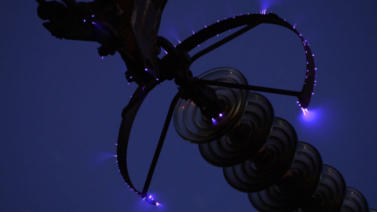
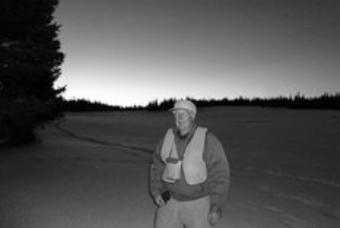
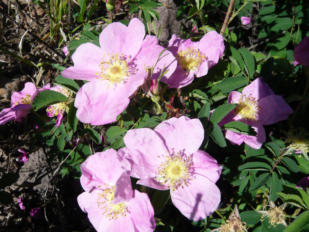
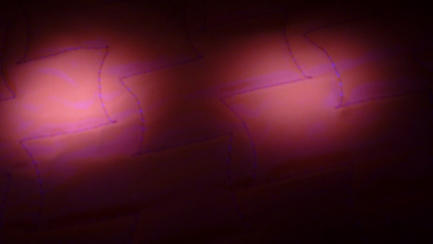
Reindeer Sight
and Behavior




- Hunter welfare
- Hunter poster child
- Altitude sickness
- Hunter heart attacks
- Hunter heart stress
- Altitude sleep problems
- Hunter spine/bone damage
- Back country hazards
- Man made hazards
- Hunter bear attacks
- Bear problems
- Mtn lion Awareness
- Insect problems and diseases
- Hunt camp rodent problems
- Game meat dangers
- Elk meat diseases




© 2016 -2021 Copyright by P. K. H. Groth, Denver, Colorado, USA All rights reserved -
See contact page for for permission to republish article excerpts.
Of Reindeer, Power Lines, the Soviet Iron
Curtain, and Your Hunting Flashlight Selection
: Animals see differently than humans. It is a
mistake to believe they observe and analyze their
surroundings as we do. More about animal
senses is becoming known from modern
unbiased research and new sensing and data
analyzing technologies. This page explores just
one animal that scientists overlooked until they
listened to the culture that depends on intimately
Knowing reindeer.
The Sami (formerly called Laplander reindeer
people) of Finland exist by reindeer herding. They
experienced an increasing problem caused by
electric transmission lines traversing their arctic
pastures. The reindeer avoided and would not
cross under them. Many forest animals will not
cross under power lines or over pipelines. The
clear-cutting necessary to keep vegetation away
from the lines presents a dangerous open area
lacking tree/brush cover.
My son was an environmental geographic
information specialist challenged with a similar
trans-Andes pipeline planning problem. Monkeys
would not cross the pipeline right-of-way. The
monkeys travel through trees and only descended
for short periods to defecate and obtain ground
shrubs. My son's solution was to plan to
intermittently leave large healthy trees on each
side of the pipeline which had intergrown
branches over the pipeline. He prescribed these
to crossing sites to engineers using satellite
imagery of the trees and topography. The
monkeys then freely moved across the otherwise
starkly barren pipeline right-of-way.
The reindeer problem was vexing because arctic
reindeer live in wide open spaces without any
trees, so avoidance of open spaces was no the
problem. An international team of scientists led
by Dr. Nicholas Tyler studied the paradox. They
approached the problem with curiosity - what are
were the deer encountering near the power lines?
Why do they refuse to go closer than a mile and a
half from the cables?
In early April 2014 the researchers reported
discovering that static electricity was creating
radiation in the ultraviolet light wavelengths on
the lines, especially near towers and insulators. V.
Gill (2014) and D. Cressey (2014) give a synopsis of
Dr. Nicholas Tyler's team results. New imaging
techniques disclosed the eerie pulsating UV light
coronas on power lines. (You can view a
helicopter video of the phenomenon at _________
.)
It does not take much imagination to realize the
reindeer will not approach the lines in either day
or night because evolutionary and environmental
factors have made it a NECESSITY for them to be
extremely sensitive to UV radiation.
Reindeer were the first large mammal recognized
capable of seeing ultraviolet light. Now it appears
almost all animals, birds, and insects can see in
the UV range. They use extended light spectrum
recognition not only for simple vision, but for
navigation (birds) and hunting (pit vipers see in
infrared). Only humans and a few species of apes
are UV-detection deficient. Evolution gave us
corneal filters to eliminate UV radiation and
reduce eye damage. (Is this due to our historical
habit of sleeping when it is dark and spending
most of the days outside evolving in low latitudes
where the sun intensely shines for consistently
long days the entire year? Read on; maybe the
reindeer give a clue to an answer.)
Reindeer eyes change color with seasons. Maja
Sojtaric (October 2013) disclosed another amazing
reindeer revelation that is (in my opinion) is highly
relevant to ungulate hunters. Mentally review
your knowledge of the Arctic seasons. The
summer sun never sets, the winter sun never
rises. Much of the winter hardship season for
reindeer must be lived in darkness, but survival is
still successful. Norwegian researchers led by
Professor Karl-Arne Stokkan at the Arctic
University of Norway keyed into observations by
herders that the deer eye colors seasonally
change. In the summer the eyes are golden, and
they progressively change to deep
The HOW: Dr. Stokkan believes the reindeer eyes
evolved because of the extreme sunlight
variation. All deer have a membrane called the
"tapetum lucidum" (Latin = bright carpet) behind
the retina. This membrane reflects light multiple
times to increase stimulation of light-recognizing
rods at the eyes' rear. The tapetum is what
changes color (and what you see when light
reflects from animal eyes in the dark). During the
long summers the eye pupil is very constricted.
The pupils dilate with waning daylight. In winter
the pupils dilate so much that they cover the
drainage tubes that normally keep eye pressures
normal. Rising pressure compacts the tapetum's
fibers, changing their color.
The WHY: Dr. Stokkan concluded the following
annual scenario. Reindeer need to see far in the
summer to detect predators, especially in misty
and hazy landscapes. The yellow corneas filter out
some of the blue haze and allow acute vision.
Seeing distantly in the winter is not a needed
asset, but having a greater visual sensitivity to
close predator movement in low light is an asset.
The blue tapetum scatters light to a greater
degree than the yellow summer seasonal color.
The greater scattering allows more rods to sense
light. While winter vision is not acute, it gives
reindeer a greater sensitivity to movement in the
shadows. This is a distinct advantage in the dark
for detecting predators. Dr. Stokkan illustrates
this survival benefit: "Reindeer herders are very
familiar with this phenomenon. They say that if
you stand just a short distance from a herd of
reindeer in the winter they will not see you, but as
soon as you move the animals startle and run
away." (As implored in my book, I once again
advise hunters to explore the observations of
people who had to understand prey to survive -
the natives.)
I am convinced that animals need to see in the
ultraviolet spectrum. That certainly includes deer
and elk. They have to in order to survive. The
staple winter diet of reindeer is lichen in a land
that is usually snow covered. Dr. Glen Jeffrey,
neuroscientist at the Institute of Ophthalmology,
University College London (in Cressey, 2014)
found that lichens absorb UV light and appear
dark against bright snow. This guides reindeer in
locating food in a snowbound landscape. I
theorize that deer and elk also use UV spectral
identification abilities to locate the more
nutritious new growth grass and forbs. I also
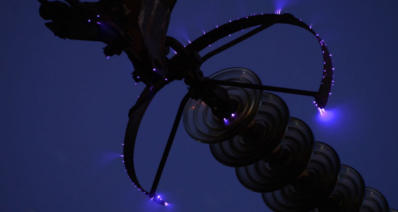
Reindeer Sight
and Behavior


- Hunter welfare
- Hunter poster child
- Altitude sicknesses
- Hunter heart attack
- Hunter heart stress
- Altitude sleep problems
- Hunter spine and bone injuries
- Back country hazards
- Man caused hazards
- Bear attacks
- Bear camp problems
- Mountain. lion awareness
- Insect diseases and problems
- Camp rodent problems
- Game meat dangers
- Elk diseases

























